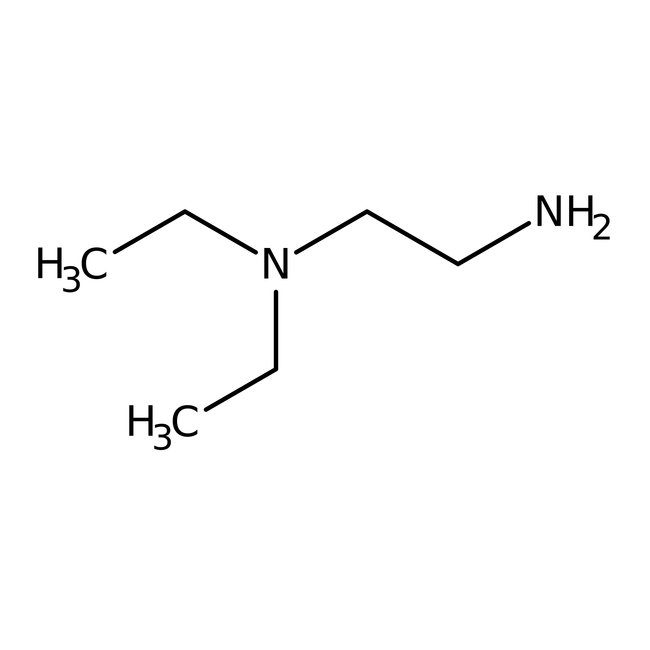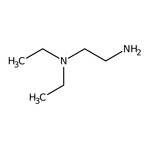Search Thermo Fisher Scientific
Thermo Scientific Chemicals
N,N-Diethylethylenediamine, 99%
CAS: 100-36-7 | C6H16N2 | 116.208 g/mol
| Catalog Number | Quantity |
|---|---|
| ALFA19636.22 | 100 g |
Catalog number ALFA19636.22
View Price:Sign InSign in to see your account pricing. Need an account? Register with us today.
Quantity:
100 g
Specifications
Chemical Name or MaterialN,N-Diethylethylenediamine
CAS100-36-7
Health Hazard 1H226-H303-H311-H314-H335
Health Hazard 2GHS H Statement
H311-H314-H318-H226
Toxic in contact with skin.
Causes severe skin burns and eye damage.
Causes serious eye damage.
Flammable liquid and vapour.
H311-H314-H318-H226
Toxic in contact with skin.
Causes severe skin burns and eye damage.
Causes serious eye damage.
Flammable liquid and vapour.
Health Hazard 3P210-P233-P235-P240-P241-P242-P243-P260-P264b-P271-P280-P301+P330+P331-P303+P361+P353-P304+P340-P305+P351+P338-P310-P363-P370+P378q-P501c
View more
N,N-Diethylethylenediamine was used in the oxidative amidation of hydrogen phosphonate diesters in the synthesis of oligonucleotides. It is also used to develop melanin targeted PET and single-photon emission computed tomography (SPECT) imaging agents for melanoma.
This Thermo Scientific Chemicals brand product was originally part of the Alfa Aesar product portfolio. Some documentation and label information may refer to the legacy brand. The original Alfa Aesar product / item code or SKU reference has not changed as a part of the brand transition to Thermo Scientific Chemicals.
Applications
N,N-Diethylethylenediamine was used in the oxidative amidation of hydrogen phosphonate diesters in the synthesis of oligonucleotides. It is also used to develop melanin targeted PET and single-photon emission computed tomography (SPECT) imaging agents for melanoma.
Solubility
Miscible in water.
Notes
Air sensitive. Store away from oxidizing agents. Protect against electrostatic charges. Keep the container tightly closed and place it in a cool, dry and well ventilated condition.
N,N-Diethylethylenediamine was used in the oxidative amidation of hydrogen phosphonate diesters in the synthesis of oligonucleotides. It is also used to develop melanin targeted PET and single-photon emission computed tomography (SPECT) imaging agents for melanoma.
Solubility
Miscible in water.
Notes
Air sensitive. Store away from oxidizing agents. Protect against electrostatic charges. Keep the container tightly closed and place it in a cool, dry and well ventilated condition.
RUO – Research Use Only
General References:
- J M Dagle, et. al. Targeted elimination of zygotic messages in Xenopus laevis embryos by modified oligonucleotides possessing terminal cationic linkages.Nucleic Acids Res.2000,28(10), 2153-2157.
- A. B. P. Lever, et al. Temperature-dependent tetragonal distortion in some thermochromic N,N-diethylethylenediamine complexes of copper(II).Inorg. Chem.,1971,10(11), 2424-2427.



